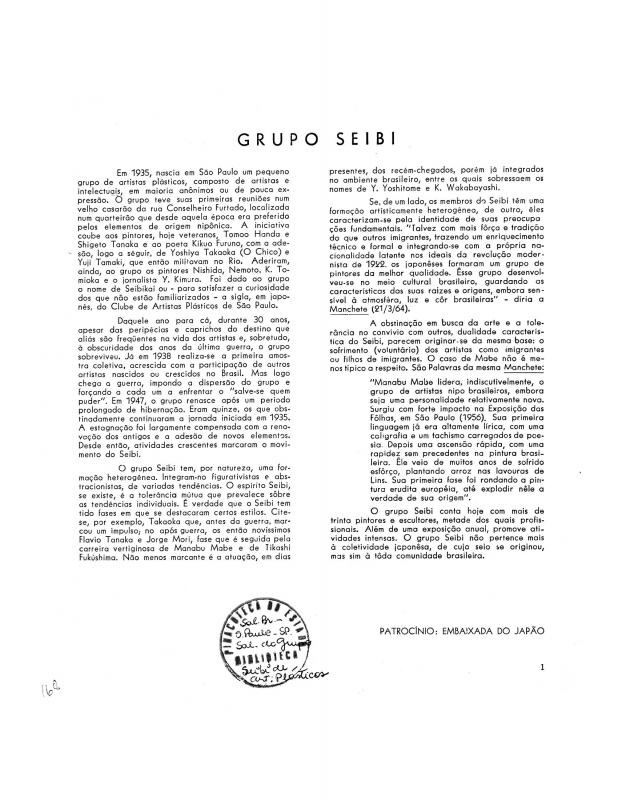The lecture “A colônia japonesa e as artes” by Walter Zanini (1925–2013) was part of the program of the Colóquio Brasil-Japão, organized by the Universidade de São Paulo (USP) in 1966. The purpose of the symposium was to create incentives for studies of the political, socioeconomic and cultural relationships between the two countries. As director of the Museu de Arte Contemporânea da USP, Zanini gave this lecture on the cultural activities of Japanese immigrants and their descendants in Brazil. (The lecture was subsequently published in the annals of the symposium.) Zanini placed the most emphasis on the visual arts, especially on the work of Tomoo Handa, Yoshiya Takaoka, Shigeto Tanaka, Takashi Fukushima, Manabu Mabe, Tomie Ohtake, Flávio Shiró, Kazuo Wakabayashi, Yo Yoshitome, Bin Kondo and João Suzuki. This was one of the first systematic analyses of this theme, and the lecturer regarded Japanese art as one element in the formation of Modern art in Brazil from the 1920s to the 1960s.
The catalogue of the 8º Salão de Artes Plásticas, organized by the Grupo Seibi and held in 1964, includes a text that sets forth the history of the group whose members were artists from the Japanese community in the State of São Paulo [see doc. no. 1110646
In addition to being one of the curators of the 1st São Paulo Biennial (1951), the art critic, historian and curator Walter Zanini was the first director of the Museu de Arte Contemporânea [MAC] (linked to the Universidade de São Paulo [USP]). As director there from 1963 to 1978, Zanini made outstanding efforts to provide incentives for the work of new artists as well as for marginalized artwork of all kinds. This included technological approaches to Conceptual Art, with multimedia projects that were used to express visual poetics. He also taught at the Escola de Comunicações e Artes da Universidade de São Paulo (ECA-USP).

